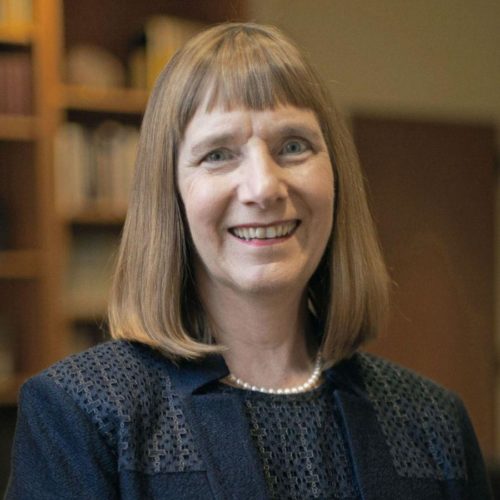Presidential Perspectives: Robert Jones, University of Illinois at Urbana-Champaign
December 17, 2018
Reading Time: 6 minutes

The University of Illinois at Urbana-Champaign has shown a commitment to lower-income students, expanding its number of Pell recipients by more than 1,000 during a time of budgetary crisis in the state. The ATI team connected with Chancellor Robert Jones to discuss the institution's success, goals, and investment in ATI.
Q: What made you want to be involved in the American Talent Initiative?
A: It’s pretty simple. I’m extremely passionate about access to and affordability of higher education, and it didn’t start when I became chancellor or president of a university. It goes all the way back to the good old days when I was running my research lab and the first activity I got pulled into outside of my lab was trying to recruit more under-represented minorities, particularly more African American students, into STEM careers. It is one of those grand challenges that all institutions of higher education need to be more strategic and intentional about when thinking about how we solve this complex issue. When I learned about the players and partners involved in ATI, and given my knowledge of the work Illinois was doing to address these issues, the only answer was yes. We’re enthused to be a part of this.
Q: How do you talk about expanding opportunities for low-income students? How do you work with your leadership team, board, or other stakeholders on issues of access and success?
A: It doesn’t take rocket science to understand that if we are to remain and advance as a competitive nation, we’ve got to think about educating the entire masses of the population. And that we then make sure that educational access and affordability is there for a growing segment of our population that heretofore has been underinvested in—and we haven’t done all that we should to prepare them to be successful in higher education. To me, it comes not only from my sense of University of Illinois moving in an important, strategic direction, but to me this is at the core of what excellence and access to success means for a university. It’s an opportunity to make a very profound statement as chancellor of what is, I think, one of the greatest institutions not only in the country but in the world. Our values–equity, diversity, and inclusivity–are at the core of the value proposition for the University of Illinois. So, for those reasons, it was easy for me to articulate my sense of value around this issue of educational access and affordability.
I also had members of my leadership team around me to send a strong message that this will remain a top priority. We will not cut back because of financial constraints. We’re investing in the future of the university’s reputation as a land grant university and the future success of Illinois and, therefore, the future success of the nation. Our trustees also played an important role as well. While the Illinois commitment didn’t require board approval, I made very, very clear that I had each of their verbal support for this before we rolled it out. I needed to make sure it aligned with their value proposition and the fiduciary governing responsibilities they have for the university. Every last one of them was very excited and very complimentary that we would make this kind of financial commitment and that we were rolling it out in an unusual fashion—with billboards up across the state advertising “Free Tuition- Illinois Commitment.” We noted it as one of the things that our board understands—the proposition that this is an amazing university, and that perhaps we’d been a bit too “Midwest modest” and instead to be bold and forthright about what we value and what we invest in. We make sure our trustees are deeply engaged in the big transformative ideas, so they can be supportive when constituents call and ask questions. And so, in many ways, they are our greatest governing entity but also the greatest advocate for advancing the strategic vision of the university.
Q: You expanded the number of Pell recipients enrolled by more than 1,000 during a time of budgetary crisis. What were some of the hard choices you had to make to continue to keep focused on that priority?
A: Illinois had already started down this path before I became the chancellor. I was absolutely committed that we would continue this work, and also that we needed to have an even greater sense of urgency moving forward. We have the largest first-year cohort in the history of the university this year—the most diverse class in the history of the university, with the highest number of first-generation college students. It kind of evolved out of the last strategic plan that was a three-year process that my colleague Dr. Wise rolled out as chancellor. We decided across the board that we would build on that plan, rather than what happens far too often, which is a new leader comes in and decides to reset everything around their vision of the world and where the institution needs to go. The issues that ATI has been formed to address are at the core of that strategic vision, not at the margins.
During the budget crisis, we were able to do an external analysis of our equity and diversity work and create, for the first time, a senior chief diversity officer position. When the state didn’t pay our monetary award program for a couple of years, we had one option: You could pass it along to the students, students that could really ill-afford another item on their bill statement, but we decided very early to protect the students and our faculty as much as we could from the budget crisis. So not only did we cover the cost of the monetary award program, we also increased our investments in financial aid. By the end of my first year, I’d made a commitment to increase by another $10 million. So even in the times of deep budgetary and other challenges, you have to try to protect things that are core to your mission. Access and affordability, and what I call “access to success.” We provide not only access to the university, but access to great careers.
I hope I’m not making it seem like it was simple–it’s not simple–but it comes from a deep sense of commitment that this is at the core of what we care about as an institution, and it should be at the core of those who have been entrusted with future generations of educational attainment and the role that institutions must play in driving the economic vitality and competitiveness of this nation and the decades ahead. While we are very proud of the number of underrepresented groups, first-generation students, low- and middle-income students that we admit, we have to do more. But we know fundamentally that we can’t do this alone.
Q: What opportunities has joining ATI created for you at Illinois?
A: Being a part of ATI has allowed us to take this internal effort that we care greatly about and make it become part of a national strategy. We really do believe that that is the only way you end up having the impact that you are seeking. It has provided a very visible, high-profile platform for us to talk in a clear and unambiguous fashion about how important this is. Everybody sits up and listens when you start talking about being in the company of institutions like the 108 that are a part of this. They are all sending the same message—that this is very important to us all—and Bloomberg’s investment and deciding that this is an important strategy carries a lot of weight in the circles that I run in.
Q: When you think about your fellow presidents who have also joined ATI, what lessons or insights do you have to share from your own experience for how they can transform their culture or establish this set of priorities?
A: You know that old saying, “If you want to know my priorities, then follow the money.” I certainly hope that we’ve set an example that even in the midst of a budgetary crisis that did have a reputational impact on us, we decided to not do what is typical in these moments–retreat from access, diversity, and equity—but to strategically invest in it. I can tell you that was the right thing to do. It sent a very strong message about our priorities, and I certainly hope that others can learn from that. We didn’t get a full operating budget, and that did cause some challenges. But we made a strategic decision about every dime that we spent during that period—continuing to invest in excellence, continuing to invest in academic access, and then, coming out of that, making a very strong commitment to send a different message about affordability.
That’s why the Illinois Commitment, which covers tuition and fees for up to four years for all qualified in-state students, is so powerful. It sends the very strong message that regardless of your social and economic status, if you work hard and you prepare yourself and get admitted to the university, then you too can have an Illinois education. We found that optics around sticker price was driving behavior that was antithetical to the goals that ATI and others are interested in. Students were saying, “Well, I can’t afford to go to a place like Illinois, so if I go to college, I’m going to go elsewhere.” We wanted to send the message that at the end of the day, if you meet the profile to be accepted, then you don’t have to worry about what it costs. Prepare yourself, and you too can benefit from an Illinois education. I think there are some lessons in there about sticking to your goals, making sure your strategic priorities align with your vision, and making sure that your budgetary allocation process supports those core values in your strategic plan for moving the institution forward.
Q: What do you see as ATI’s potential impact beyond its membership?
A: I think that ATI will be a prime example of the value proposition and the effectiveness of collective impact strategies, because these societal challenges regarding educational equity are too big and too complex for any university to solve alone. It is going to be critically important that we are all rowing in the same direction, that we all have a common set of goals and objectives that we are working toward. It won’t be just hype; it will be, “Look at the numbers.” That speaks volumes. I fundamentally believe that we are going to surpass our goals, at least at my institution. And I have to institutionalize that. When I’m no longer sitting in this chair, it needs to be such a part of the culture of the university that no one thinks about touching it, just like no one would think about reducing the size of our research enterprise or not having undergraduate teaching at the heart of what we do.




